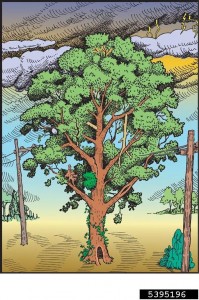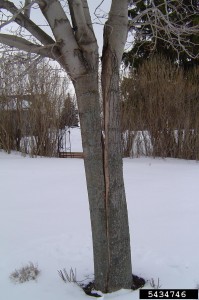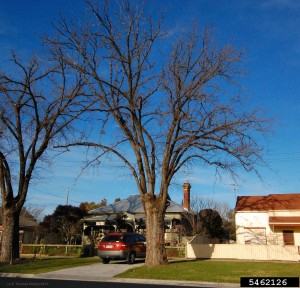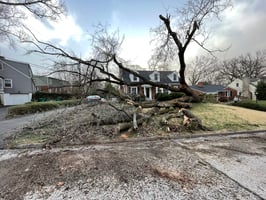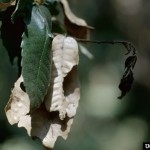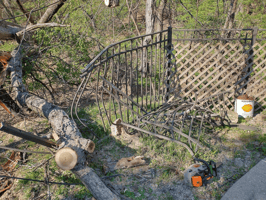The St. Louis area has already experienced a destructive tornado season so far. Read on to learn...
Why Trees Fail and What to Look For
With all the heavy rains and strong winds in the St. Louis area lately you have probably noticed tree damage. Branches can break or whole trees can fall during these violent storms, but some trees are more susceptible to damage.
A risk assessment is completed by a professional arborist who cares for your property and your trees. There are three factors to consider in this assessment:
- the potential for tree failure
- the environment that may contribute to failure
- what would be damaged
The ins and outs of this assessment can get pretty detailed, so today we are sharing 5 major concerns in determining the potential for tree failure that YOU can observe even before an arborist comes to your home.
Being educated on what to look out for can lessen the chance your property is damaged next.
Concern #1: Co-dominant stems
This is when a tree has two or more stems emerging from the same location on the main trunk. These are nearly equal in size. When left unchecked these stems continue to grow without any single stem being dominant. A tree with co-dominant stems may split apart where they are attached.
Concern #2: Previously “topped” tree
Trees that have been topped, will often have weak attachments to new branches. This makes a previously topped tree one that is more prone to fail. (Just another reason Not to Top! Check out last week’s blog post on that subject here.)
Concern # 3: Outward Signs of Decay
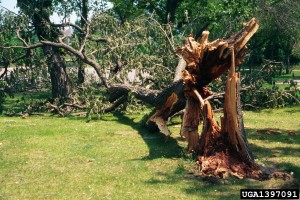
Trees can still be producing leaves and have a rotted stem. CC image courtesy Joseph OBrien via bugwood.org
While a tree can look perfectly healthy on the outside, there can be trouble inside.
Decay is not always obvious when making an external inspection of a tree. A tree may appear to be solid and structurally sound, and it may have a thick, green canopy, yet it can have significant decay inside. ¹
Look for mushrooms growing on the wood, open cavities, and visible decayed wood. The presence of some insects can be indicators of decaying wood. Keep an eye out for carpenter ants, bees, and even some species of birds prefer to make nests in cavities.
Concern #4: Trees in need of crown reduction
Some people have their trees “topped” to reduce the crown. They fear the tree is growing too large and may topple in a storm. While this is not an approved method of pruning, there is reason for a reduction in the limbs of some large mature trees. Trees with a thick crown have a higher potential to be uprooted in a storm. This is especially true in urban areas where root systems may be hampered by structures, or in newly constructed areas where trees that were once buffered by other trees are now exposed to strong winds.
Concern #5: Type of Tree
Some tree species are more susceptible to failure. These three trees are known for their weak wood. Avoid them in your yard:
- Silver Maple
- Tulip Poplar
- Eastern White Pine
Having your trees evaluated to determine the likelihood that part or all of the tree will fail and cause damage is a good idea, especially if it has been awhile since an arborist has assessed your trees.
Considering removing a tree that you know is a risk? DO NOT WAIT.
¹Arborists’ Certification Study Guide, International Society of Arboriculture. 2010

